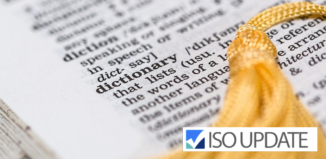ISO 9001:2008 and ISO 9001:2015 – Looking at the Upcoming Changes
The new ISO 9001:2015 is currently at the Final Draft International Stage (FDIS), the fifth stage of a six stage process, and the final revision is expected to be published by September 2015. There are a lot of expectations regarding the release of the new standard and many are wondering what the differences will be between ISO 9001:2008 and ISO 9001:2015.
The recently published draft of the standard (DIS) has shown what the main differences are about; even though both standards cover essentially the same topics, there are some important changes. Some of these are:
- The most notorious difference between the standards is its structure. ISO 9001:2008 had five main sections and ISO 9001:2015 has seven. The new ISO 9001:2015 aligns with high-level organizational structure established on the ISO Guide 83 (“Annex SL”), requiring all new ISO management system standards to be aligned on a high-level structure with a set of common requirements. Such structure is as follow:
- Scope
- Normative References
- Terms and Definitions
- Context of the Organization
- Leadership
- Planning
- Support
- Operation
- Performance Evaluation
- Improvement
- The new standard puts a greater emphasis on the “context of the organization”. Unlike ISO 9001:2008, the new standard will require organizations to consider the external and internal issues that may influence their quality management system (QMS) and they will need to determine how these will be addressed.
- With the new ISO 9001:2015, organizations will be required to take a risk-based approach to identify and address the risks that can jeopardize their ability to meet customer and regulatory requirements. In ISO 9001:2008, even though a risk-based approach is not explicit, the standard implicitly guides organizations in managing their risk.
- The new standard has eliminated the distinction between documents and records by referring only to “Documented information”. There also will be general requirements for documentation, with no reference to documented quality manual, documented procedures or to quality records.
- The specific requirements for preventive action present in ISO 9001:2008 have been removed in the new standard. This decision was motivated by the perspective that prevention is the task of the QMS in its entirety.
- Some concepts have been replaced in the new standard, such as the term “product” is replaced by “goods & services” and “continual” by “continual improvement.”“Purchasing” and “outsourcing” will be replaced by “external provision of goods and services”.
- The new standard also eliminates any reference to a “Management Representative”. Instead, management duties and responsibilities can now be assigned directly to top management (to one person in particular or to many).
These are the main differences between the two standards which are based on the DIS version of ISO 9001:2015. There are still comments from over 90 countries that will be taken into account and it is yet to see which of these changes will be maintained in the final official version.
ISO Terms Explained

To the novice quality manager, ISO jargon can be extremely overwhelming. What is an NCR? What do you mean by OFI? Are we certified or accredited? But before you go and pull out your hair, let’s take a moment to go over some of the most frequently used terms and their definitions with regards to ISO and Management System Certification.





You’ve managed a first class post